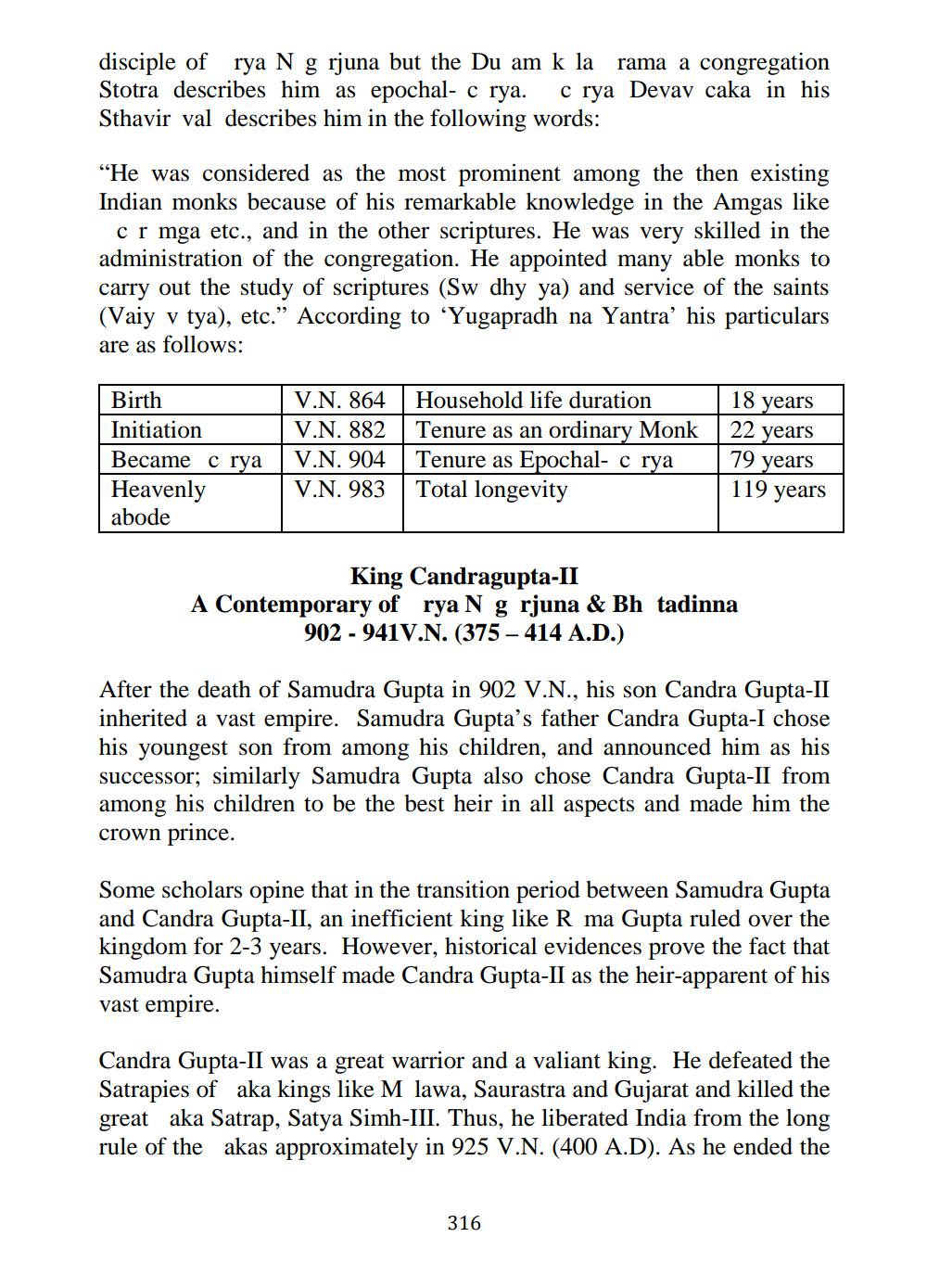________________
disciple of rya Ng rjuna but the Du am k la rama a congregation Stotra describes him as epochal- c rya. crya Devav caka in his Sthavir val describes him in the following words:
"He was considered as the most prominent among the then existing Indian monks because of his remarkable knowledge in the Amgas like
cr mga etc., and in the other scriptures. He was very skilled in the administration of the congregation. He appointed many able monks to carry out the study of scriptures (Sw dhy ya) and service of the saints (Vaiy v tya), etc.” According to "Yugapradh na Yantra' his particulars are as follows:
Birth Initiation Became c rya Heavenly abode
V.N. 864 Household life duration V.N. 882 Tenure as an ordinary Monk V.N. 904 | Tenure as Epochal- c rya V.N. 983 | Total longevity
18 years 22 years | 79 years
119 years
King Candragupta-II A Contemporary of rya N g rjuna & Bh tadinna
902 - 941V.N. (375 - 414 A.D.)
After the death of Samudra Gupta in 902 V.N., his son Candra Gupta-II inherited a vast empire. Samudra Gupta's father Candra Gupta-I chose
youngest son from among his children, and announced him as his successor; similarly Samudra Gupta also chose Candra Gupta-II from among his children to be the best heir in all aspects and made him the crown prince.
Some scholars opine that in the transition period between Samudra Gupta and Candra Gupta-II, an inefficient king like R ma Gupta ruled over the kingdom for 2-3 years. However, historical evidences prove the fact that Samudra Gupta himself made Candra Gupta-II as the heir-apparent of his vast empire.
Candra Gupta-II was a great warrior and a valiant king. He defeated the Satrapies of aka kings like M lawa, Saurastra and Gujarat and killed the great aka Satrap, Satya Simh-III. Thus, he liberated India from the long rule of the akas approximately in 925 V.N. (400 A.D). As he ended the
316




